If you’ve ever flown into Reno-Tahoe International Airport (RNO) when the winds are howling out of the west, you know that the approach and landing can be’¦sporty. In fact, it sometimes gets so turbulent that the mainline jets head for Sacramento International Airport (SMF), leaving RNO to Alaska Airlines’ Bombardier Q400 turboprops, which can use RNO’s short crosswind runway. I’ll happily fly into RNO from SEA on the AS Q400s on those bouncy days.
The bumps can mean that conditions are great for soaring. Yes – I’m a glider pilot, and the region around Reno is world-famous for those who love to fly without an engine. It’s an amazing sensation, soaring in our ocean of air. Some flights are like a dream – I just have to think about moving the control stick, and off I go, hunting for lift, as if the glider’s wings are attached to my shoulders.
When you think of gliding, you might have an image of a pilot running towards the edge of a cliff, ready to leap into the air while hanging from a fabric-covered wing. Yes, there are those out there who enjoy hang-gliding, in aircraft that are at the light and slow end of the soaring spectrum. Other than a lack of an engine, they don’t have much in common with a modern high-performance glider.
Modern gliders are built from composite materials, including fiberglass and carbon fiber. Those materials allow the designers to sculpt fuselages with elegant and low-drag curves, and to make long, thin, and very strong wings. Almost all gliders are manufactured in Europe, and wingspans are measured in meters. For example, the Alexander Schleicher ASK-21 two-seat glider (pictured) has a 17-meter/55-foot wingspan. Maximum speed is 151 knots, but you’ll circle to climb in a thermal at 45-50 knots, and fly between thermals at around 100 knots. At full gross weight, with two on board, the glider weighs 600 kg, a bit over 1,300 lbs. A new ASK-21 will set you back about $120,000.
The designer’s objective is for the glider to eke out the best lift over drag ratio (L/D), and to lose the least amount of altitude over a given distance or time. The L/D is expressed as ’œsomething to one.’ In the case of the ASK-21, the L/D is 34:1. So, if it’s clean and waxed, and flying in perfect conditions, an ASK-21 could travel 34 feet forward for every one foot down. Put another way, if you’re flying 1,000 feet above the ground, you could travel 34,000 feet while descending to ground level. That’s over 6 miles! Some higher-performance gliders have an L/D of 50:1, or even better.
But that kind of performance is in perfect, almost laboratory, conditions. The atmosphere in which we fly is certainly not perfect. There are currents flowing all over the place; up, down, and sideways, and a glider pilot tries to search out the air that’s rising. The air might be rising because of a thermal, a column of air caused by heating on the ground. If you’ve watched eagles or hawks circling, you’ve watched them ’œworking a thermal.’ Glider pilots try to copy the birds when we’re centering on a thermal ’“ a nice tight turn, feeling the lift happening from a wing lift or a bounce, and listening to the wail of the variometer as we’re climbing.
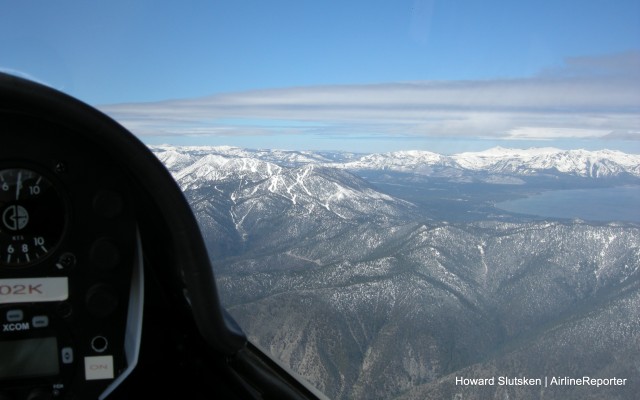
I’m climbing in-wave at 13,000 feet in the LS-4, near Lake Tahoe. You can see the vario showing 8 knots, or 800 feet per minute, up!
The variometer, or ’œvario’ is a very sensitive vertical speed indicator. It’ll show any movement of the glider, up or down, almost instantly. The vario has an audio output so that a pilot can keep ’œeyes out’ and not watch the instruments. When the glider is climbing, the pitch of the vario increases, and the opposite when descending.
The region around Reno is famous for a kind of lift that brings glider pilots from around the world. It’s a phenomenon called ’œmountain wave.’ Ever watch the movie, ’œFinding Nemo?’ Remember when Marlin and Dory ended up in the East Australian Current (EAC) with Crush and the Sea Turtle, ’œDudes?’ If you consider that air is a fluid, and the same kind of currents that happen in the oceans can happen in the atmosphere, then the idea of the jet stream or mountain wave makes sense. In the case of wave, the topography north and south of Reno makes it work.
When strong winds come out of the west, they hit the ridge of the Sierra Nevada mountains on the east side of Lake Tahoe. That ridge goes up to 9,000 feet above sea level (ASL). The valley to the east of the ridge, home to Reno, Carson City, and Minden, is around 4,500 feet ASL. The air oscillates ’“ it’s deflected upwards at the ridge line, and then sinks back down, and back up and down, just like a wave. The wavelength might be less than a mile, but the wave can be thousands and thousands of feet high. And it’s moving, just like the EAC. Lenticular clouds, or ’œlennies’, appear when the wave is working. Lennies are lens-shaped, very unique, and might make you think that a gigantic UFO has shown up in the neighborhood.
To get airborne, gliders are normally towed behind an airplane using a 200-foot-long rope, from the airport to an area of lift, and then the glider pilot releases the towline. A ’œwinch tow’ can also be used; a method that’s popular in Europe. A really long cable extends from an engine-driven winch that’s parked at the far end of the runway. After it’s attached to the belly of the glider, the winch reels in the cable, the pilot pulls back on the stick and the glider climbs at an incredible rate and angle. The pilot releases the cable at the top of the arc, and heads off.
With a tow plane, you can head away from the airport, and also release at a much higher altitude than with a winch tow. Tow pilots will know where the lift usually occurs around the airport, maybe a ’œhouse thermal’ or ridge lift. When flying a wave flight, the tow plane has to tow the glider right into the wave. And just like Marlin and Dory experienced, the transition between the surrounding air and the wave can be really, really, turbulent. Make sure your multi-point harness is tight, or you might whack your head on the canopy.
But it’s amazingly-smooth when you’re established in the wave, and the glider goes up like an elevator. And high. Wave flights in the region have easily topped 30,000 feet. IN A GLIDER!! To breathe, pilots use pressurized oxygen masks, and dress really warmly – it gets cold up there. By adjusting the glider’s forward speed to match the wind, you can pretty well hover over a spot on the ground while heading upstairs. But where there’s lift, there’s sink, or downward-moving air. Fly into sink, and you might be back on the ground sooner than you had hoped, so glider pilots will hunt around for more lift, just like the eagles.
Sooner or later, you’ve got to land. Hopefully, you’re near an airport. If not, you’ll have to figure out the best place to finish your flight, and ’œland out’ in a field, or some other suitable place. Thanks to low approach speeds and air brakes on the wings to control the approach, gliders can put down in a short distance. The French have a great expression for a land out ’“ ’œAllez aux Vaches’ or ’œGo to the Cows!’
Once down safely on a land out, the glider might be recoverable by a tow plane, and air-towed back to an airport. Or the pilot might decide to call in the ground crew, who will bring the glider’s custom trailer to the landing site, which is hopefully close to a road. Once there, the wings are detached from the fuselage, the horizontal stabilizer is taken off of the rudder, and all of the pieces are neatly stowed in the trailer. Gliders are designed for the eventuality of a land out, with quick disconnect and auto-connect fittings. Once back to the airport, everything is easily reassembled, the integrity of the controls is double- and triple-checked, and the glider is ready for its next flight.
Flights of six hours or more are commonplace from Minden-Tahoe Airport (MEV), where I fly. When the conditions are right, pilots will easily do the run from Minden down to Bishop, California, and back, about 135 miles each way. And when the wave is really cooking, pilots do ’œyo-yo’ flights up and down the length of the Sierras. In a two-seat Duo Discus, glider-pilots-extraordinaire Gordon Boettger and Hugh Bennett flew a 13-hour yo-yo flight of 1,403 miles/2,259 km some years ago in May. They were basically racing the sunset. These two have also attempted a few downwind dashes from MEV that have landed them as far as Utah, and in Hulett, Wyoming, 873 miles/1,400 km away.
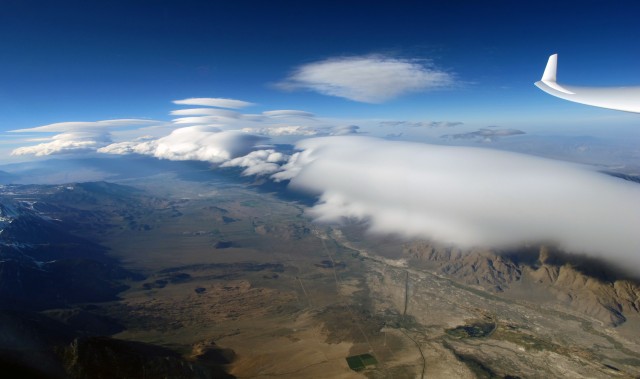
Lenticular clouds in wave, from 27,000 feet in a Kestel 17 glider near Lone Pine, CA – Photo: Gordon Boettger
Gordon took this amazing photo during a record-setting flight. He explains: “I was near Lone Pine, CA, at 27,000 feet in my Kestrel 17, during a 2,200 km/1,360 mile flight, the longest flight in the Northern Hemisphere in a glider. The wave was incredibly strong in the Owens Valley. It was difficult to stay below 29,000 feet, even with the spoilers opened. It was a bit discomforting, in a way, being ‘pulled’ skyward!”
I’ll leave those high-altitude, long-distance flights to Gordon and his friends. I’m happy soaring for a couple of hours close to MEV, working the thermals and ridge lift, hanging out with the hawks, and enjoying the gorgeous views. I fly with the gang at Soaring NV at MEV, just south of Carson City, and just east of the mountains around Lake Tahoe. If you’re of a particular vintage, you’ll remember the TV series, ’œBonanza.’ That’s the neighborhood, and you can see Reno and Carson City on the map that burns up in the show’s opening.
Soaring NV is a commercial gliding operation, just like many powered-aircraft flight training facilities. To get your private glider license in the US, the Federal Aviation Administration (FAA) first requires that you fly enough flights with an instructor to get signed off to fly solo, and then fly at least ten solo flights. You have to pass a written test, and then have an oral exam and practical flight test with an FAA Designated Pilot Examiner. And if you’ve just turned 14-years-old, you can get your glider license. Flying before you’re driving!
If you already have your powered-aircraft license, you can get a glider ’œadd-on’ in ten flying hours, and ten flights. That’s what I did, and learning how to fly gliders has made me a much better powered pilot. It’s all about energy control. Just ask Captain Sully, or Captain Robert Pearson, who brought Air Canada’s ’œGimli Glider’ Boeing 767 to a safe landing after a total power loss. Both glider pilots. Aerobatic champion and renowned airshow performer Sean D. Tucker recently got his ’œadd-on’ at Soaring NV, and I heard that he had a ball.
You could also join one of any number of gliding clubs around the world to work on your license. Being part of a club can be a lot of fun. Gliding is an internationally governed sport, administered by the Fdration Aronautique International (FAI) and national gliding associations. There are many competitions, and a series of skill badges that recognize pilots’ personal flying achievements of specific distances, altitudes, and flight duration.
Interested? In Part Two I’ll take you along for a flight in the LS-4, and offer a few more nitty, gritty details about gliding. I’ll even tell you about my hairy first flight in a single-seat glider!
Read “Gone Gliding, Part Two!”
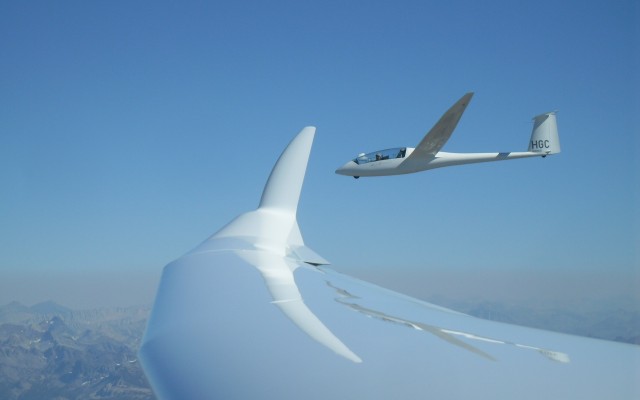
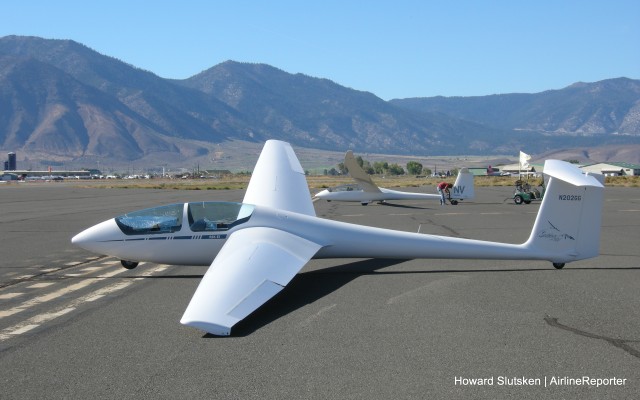
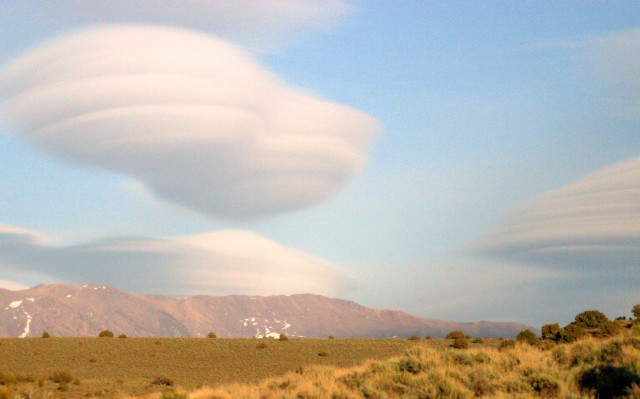
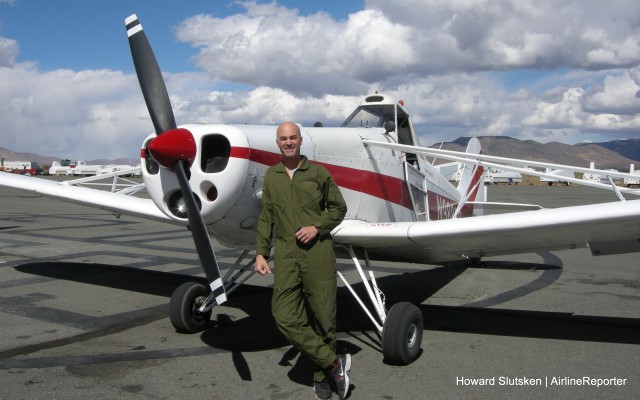
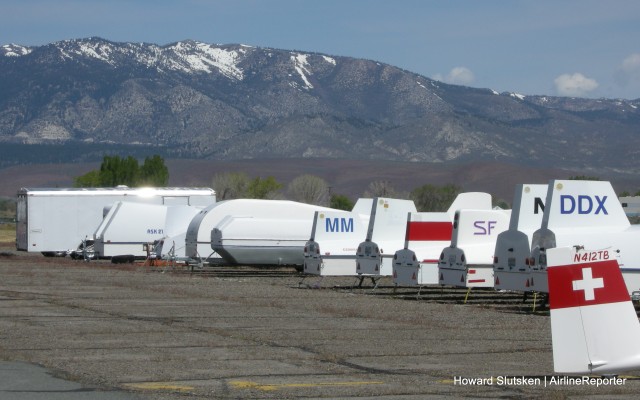
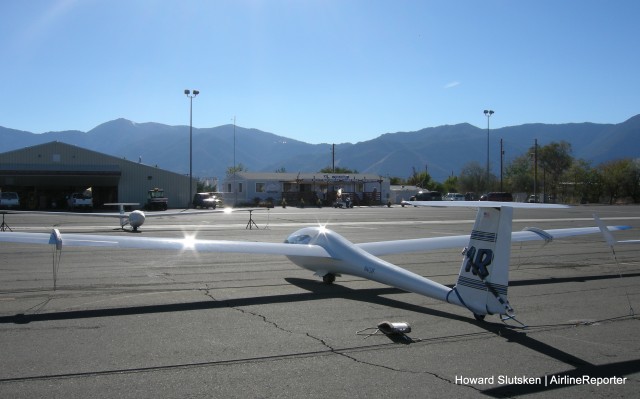
“Other than a lack of an engine, they don”t have much in common with a modern high-performance glider.”
You may want to research the current state of hang gliding, and you might be surprised to learn how much there is in common.
Tom, no slight intended to the hang-gliding community! I was only pointing out how very different the two types of aircraft look to the observer.
Minded is awesome place. Was instructing there for few years and I truly miss the place. Great article.
Love the place! While training at 4SD, I made a cross country around Lake Tahoe, spinning (great way to lose 2000′) the Super Decathlon after crossing the pass to join a Diamond on downwind for breakfast at the Taildragger Cafe. January flying is great, and when it starts getting bumpy in the afternoons, to go home and listen to a glider pilot talking with RNO Approach. If you’re airplane doesn’t have much power, or you’ve lost engine power, gliding is good. Great piece!
Howard, a lot of us fly both types of glider – hang and, er, sit!
All the concepts are the same – compare theory in books like “Soaring Pilot’s Manual” (for sailplanes) with what’s in “Hang Glider’s Technical Notebook” (for hang gliders, obviously).
The sailplane looks much, much sleeker – and its performance is incomparably better.
The hang glider offers a pure experience of flight that the sailplane cannot come close to.
Both are awesome!
What a fun, inclusive article! Minden is an amazing place to soar. I made it to 23,000 over Lake Tahoe with an instructor and will always remember how amazing that felt!!
Up in Washington now where the opportunities are more spread out, but I still go by the airports where glider activities are happening and I did get my private pilot license for powered planes.
Thank you for the great info!
A number of years ago I told a friend that I was heading to Tahoe for a vacation. He was a pilot, i am not, and he told me to make the drive to minden and see if the offer rides in a sailplane. Well, it’s one of the most interesting and fun things I have ever done. Each year now the trip to Minden is what I look forward to the most. I drag anyone that’s interested with and they all say the same thing. Incredible!!! The tow is even interesting. The pilot flies from the rear seat. To make it interesting, i had to pull release from the tow line at 10000 feet, took some courage for a novice like me The view of Lake Tahoe on my left and the value on my left was spectacular.To me it is a wonderful way for a non-pilot like myself to experience something first hand, that I probably would never been able to do. I think the name of the place was Minden Soar or something like that. Great article!!
Thanks, Howard, for a great story about the the wonderful and under-appreciated sport of soaring! I’ve been flying, racing, and instructing in sailplanes since 1972 and the ability to soar for hours and cover hundreds of miles in an afternoon still seems like magic to me. If you’re in the Reno-Tahoe area and want to experience some of that magic, go to SoaringNV.com and sign up for a flight. If you’re intrigued by the amazing flights of Gordon Boettger and co-pilot Hugh Bennett mentioned in Howard’s story, look up accounts of their 2011-2014 flights (with spectacular photos) at SoaringCafe.com.
great article, you will need some oxygen mask or something to fly above 10.000ft, right ?
Thanks, everyone, for your comments. Zaki, the pilot does need to use oxygen above a certain altitude, and I’ll be writing about all of that in Part Two.
Gliding needs airspace.
It needs to be defended.
Thanks
Enrico
http://www.aecaosta.it
I got my private @17 could not afford renting so intrigued with hang gliding for 10 years flew over 18K in Telluride and Albuquerque lot of adventure Sierras towing and balloon drops. Hang gliding has come a long way it is the closest thing to flying like a bird!!! have since built my own aircraft KR2 and know all aircraft have limitations and the safety of respecting those boundary’s keep one self alive. Flying is expensive anyway you look at it!
Great article that we will share with all of our club members to read in case we are “weathered out” this weekend! Thanks so much.
Howard,
Thanks for the great article! I’ve driven right by the airport and had no idea it was there. I’ll have to check it out next time I head up 395. BTW, I saw the Gimli Glider episode on National Geographic, it was pretty amazing. What really floored me was that fact that all the other pilots that attempted the landing in the simulator crashed the 767!
Hi, optimum L/D ratio is designer’s quest, but you should not confuse this with the glide ratio. The Glide Ratio of the ASK 21 may be 34:1 but this is not the Lift Drag ratio. Am I correct?
Yes, you’re correct, Eagleman. But the L/D and glide ratio ARE the same when the glider flies at a constant speed. The glide ratio changes as the glider’s flying conditions change, but the design L/D doesn’t. That’s why I said “in perfect, laboratory conditions” in the story. Here’s a quote from the Alexander-Schleicher website, which may or may not help clarify the issue: “The glide ratio of the ASK 21 was independently measured as 34:1, although we have not revised the best L/D of 33.5:1 first calculated by designer Rudolf Kaiser.” I think many use the two terms interchangeably, hopefully with the word “optimum” tied with “glide ratio.” Thanks for the comment!
Hello Howard, Many thanks for the prompt response. Ever learning I’m glad to have got something right in aviation technology. One more question. When a glider slows down and deploys flaps but remains at a constant altitude, lift does not increase but drag does?
Is this correct? And that is why the glider slows down, correct? So the lift drag ratio changes with airframe configuration? Is this correct? Now when a chosen speed to fly is reached for a selected configuration, the glider then begins to descend. Can one still regard the L/D ratio and Glide Ratio as interchangeable?
Eagleman, I wanted to make sure I was giving you the right info, so I asked the expert, Gordon Boettger, for some help. He pointed us to this Wiki article: http://en.wikipedia.org/wiki/Lift-to-drag_ratio. I think it covers your questions, and even gives you some nifty equations for the next time you’re “hanger flying!”
Thank you Howard. There is a huge need for an open forum as you have created. Your feedback is very much appreciated. These links are great for students and I’d like to stay in touch.